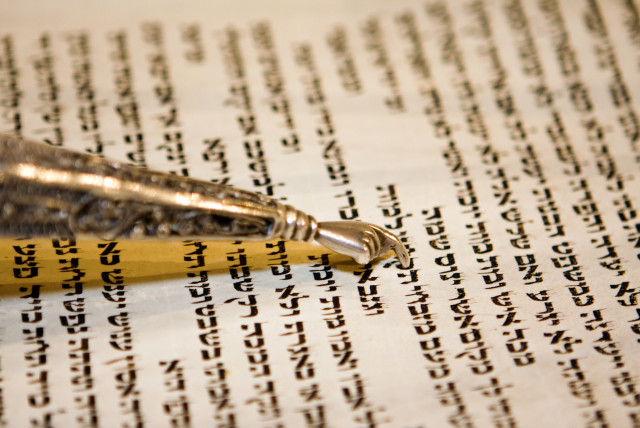Parashat Va’ethanan: The return of hope

Just as the sin of the golden calf was rectified and the connection between God and the Jewish nation was restored through the second Tablets, we also believe that a complete redemption will come.
The weekly Torah portion of Va’ethanan is read every year after the fast of Tisha Be’av, according to the customary Torah reading cycle of the Jewish people. This is not a random occurrence but has a fundamental reason. As the Rambam (Maimonides) writes in his halachic work Mishne Torah: “The simple custom is to read... Va’ethanan after Tisha Be’av” (Hilchot Tefila, chap. 13). The Rambam does not provide a detailed explanation for this custom. Throughout the generations, scholars and commentators sought to understand the connection between parashat Va’ethanan and Tisha Be’av.
The fundamental understanding of this matter is related to the perception embedded in the words of our sages, who consider the days after Tisha Be’av as days of comfort. Following the period of “Between the Straits,” the three weeks between Shiva-Asar Betamuz and Tisha Be’av, during which we mourn the destruction of the Temple, we enter days of consolation, days when we focus on consolation for the destruction, reinvigorating our hopes for redemption and rebuilding. Parashat Va’ethanan is connected to this hope, and that is why it is read immediately after Tisha Be’av.
LET US delve into the explanation provided by Rabbi Yitzchak Hutner (1906-1980), a prominent scholar and deep thinker who lived in the United States and Israel. He pointed out the Ten Commandments written in this parasha and argued that they offer an explanation for connecting the parasha to Tisha Be’av.
The symbolism of breaking the tablets
As we all recall, at the revelation at Mount Sinai, Moses ascended Mount Sinai and stayed there for 40 days and nights. At the end of this period, he descended with the Tablets of the Covenant on which the Ten Commandments were written. In the Book of Exodus, it is described that when Moses descended from the mountain and approached the Israelite camp, he heard sounds from within it. As he got closer, he saw that, in his absence, the Israelites had created a golden calf and were treating it like a deity, dancing around it and calling out, “This is your god, O Israel.” Moses’ immediate reaction to seeing the golden calf was extreme; he threw the Tablets from his hands, breaking them (Ex. 32:19).
Breaking the Tablets was an extreme act, as they were given to Moses by God. Can a person, no matter how great, be allowed to break the Tablets bestowed by God to the Children of Israel? Our sages relate that God praised Moses for this action and said to him, “Well done for breaking [the Tablets].” But even according to them, God did not instruct Moses to break the Tablets. It was an independent and justified decision by Moses, who realized that there was no point in giving the Tablets to the people of Israel, who were deeply immersed in idol worship.
However, the story of the Tablets does not end there. Afterward, Moses pleaded before God to forgive the sin of the golden calf. As a result of his prayer, the Israelites were given new Tablets, replacements. The first Tablets were broken, but the second Tablets remained and were preserved in the Tabernacle and later in the Temple.
Were there any differences between the first and second Tablets? When we read the Ten Commandments written in the Book of Exodus and compare them to the ones in parashat Va’ethanan, we find slight variations between the two versions. According to an accepted interpretation in Bava Kama 55b, these differences represent the variations between the first Tablets, which were broken, and the second Tablets, which were preserved.
Thus, we find that in parashat Va’ethanan, we read the text on the second Tablets. The second Tablets represent the possibility of repair. After the sin of the golden calf and the breaking of the Tablets, it seemed that all hope was lost for the Jewish nation to merit receiving the divine Tablets. But after Moses’s prayers, the second Tablets were given, expressing God’s forgiveness and the Children of Israel’s repentance.
The second Tablets are an expression of repair, even in the worst circumstances. Just as the sin of the golden calf was rectified and the connection between God and the Jewish nation was restored through the second Tablets, we also believe that a complete redemption will come. The close relationship between God and the people of Israel will be restored, a relationship that we will express by following God’s ways and will be expressed by Him by bequeathing spiritual and material success to the Jewish nation. As it is written before the revelation at Mount Sinai: “And now, if you obey Me and keep My covenant, you shall be to Me a treasure out of all peoples.”■
The writer is rabbi of the Western Wall and holy sites.
Jerusalem Post Store
`; document.getElementById("linkPremium").innerHTML = cont; var divWithLink = document.getElementById("premium-link"); if (divWithLink !== null && divWithLink !== 'undefined') { divWithLink.style.border = "solid 1px #cb0f3e"; divWithLink.style.textAlign = "center"; divWithLink.style.marginBottom = "15px"; divWithLink.style.marginTop = "15px"; divWithLink.style.width = "100%"; divWithLink.style.backgroundColor = "#122952"; divWithLink.style.color = "#ffffff"; divWithLink.style.lineHeight = "1.5"; } } (function (v, i) { });

